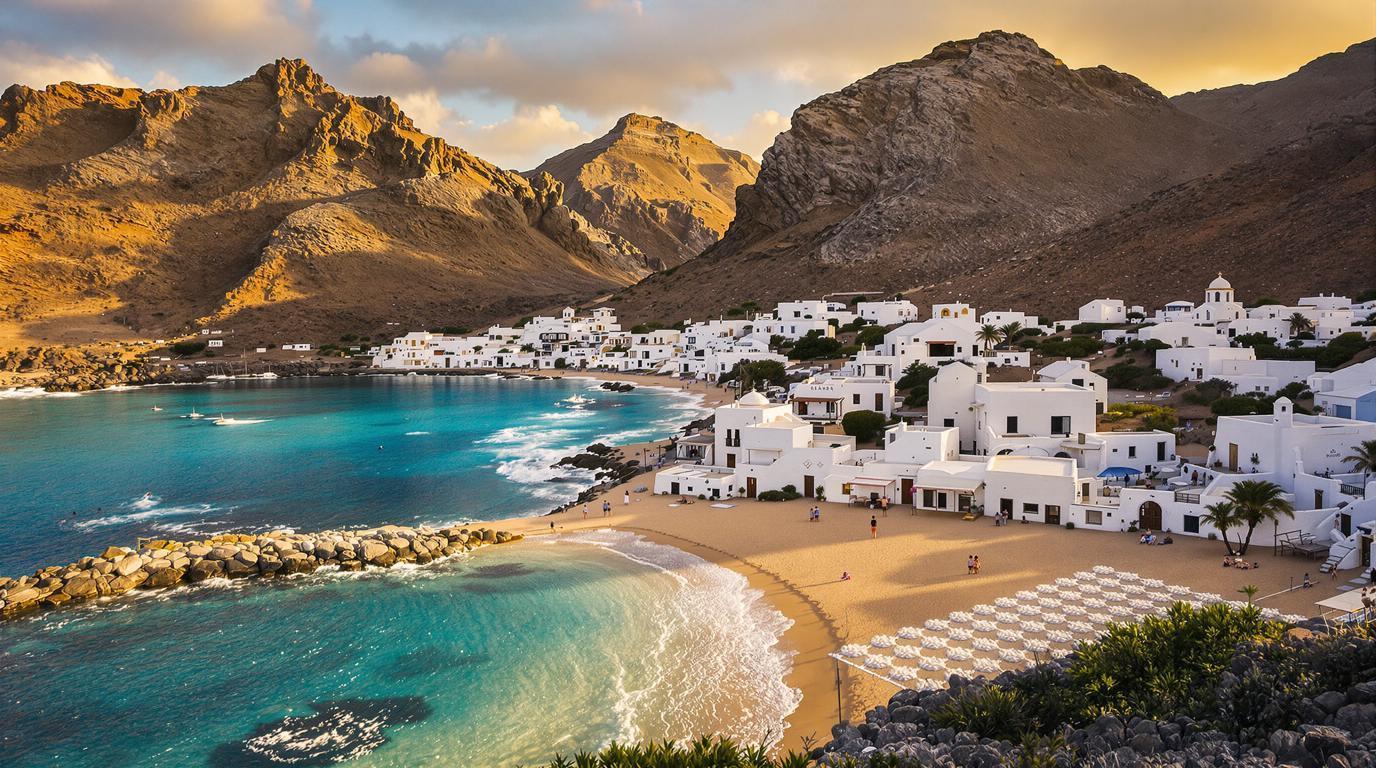Most travelers rushing between Lanzarote’s volcanic attractions never realize that just 25 minutes by ferry lies something extraordinary. La Graciosa covers barely 29 km² with only 700 residents, making it smaller than most city neighborhoods yet infinitely more magical.
This isn’t just another Canary Island. Walking through Caleta de Sebo feels like stepping into a living postcard where sandy streets replace asphalt and the loudest sound is gentle Atlantic waves. The island’s nickname, “La Graciosa” meaning “the graceful,” captures something guidebooks struggle to convey about this protected paradise.
What makes this tiny island so captivating isn’t just its size—it’s how that intimate scale creates experiences impossible anywhere else in the Canaries. Every corner reveals another reason why gracioseros (residents) guard their slice of heaven so carefully.
The impossible scale that creates island magic
Streets of sand in Europe’s smallest community
Imagine an entire island where every road consists of fine volcanic sand, where the only vehicles are a handful of licensed 4×4 taxis. La Graciosa remains the only inhabited Canary Island without paved roads, creating an atmosphere so peaceful that visitors often whisper instinctively. The contrast hits immediately—you’ve traveled from modern Lanzarote to what feels like a different century in just 25 minutes.
Population density that transforms travel
With 700 residents spread across 29 km², La Graciosa has roughly 24 people per square kilometer. Compare that to Lanzarote’s 150 or Tenerife’s 400, and you understand why every beach feels private, every sunset intimate. This tiny population means authentic interactions become inevitable—from chatting with fishermen mending nets to sharing stories with café owners who remember every visitor.
Marine sanctuary larger than the island itself
Europe’s largest protected waters
The Chinijo Archipelago Natural Park surrounding La Graciosa covers 700 km² of protected marine ecosystem—nearly 25 times larger than the island itself. This vast underwater sanctuary means snorkeling reveals pristine coral gardens and fish populations that vanished from crowded destinations decades ago. The crystal-clear waters offer 30-meter visibility most days, creating underwater experiences that rival tropical paradises.
Conservation success story in action
Local guides explain how strict protection since 1986 has restored marine life to pre-tourism levels. Monk seals occasionally return to hidden coves, while sea turtle populations steadily recover. This isn’t just environmental theater—it’s active conservation where your visit directly supports habitat restoration through carefully managed eco-tourism fees.
Authentic island life that mass tourism hasn’t touched
Traditional fishing village rhythms
Morning coffee at Caleta de Sebo’s harbor means watching fishing boats return with daily catches, their techniques unchanged for generations. Local restaurants serve fish caught that morning, prepared with recipes passed down through families. The pace follows tides and weather rather than tourist schedules, creating genuine cultural immersion impossible at resort destinations.
Community intimacy at human scale
Shop owners remember your name after one visit, children play safely in sandy streets, and evening conversations naturally include locals sharing island stories. This isn’t performed authenticity—it’s how communities function when tourism remains secondary to daily life. Accommodation stays limited to small guesthouses and family-run apartments, ensuring visitors integrate rather than overwhelm.
Access that protects through natural limitation
Ferry journey as gentle transition
The 25-minute ferry ride from Órzola serves as perfect decompression, allowing mental shift from modern tourism to island tranquility. Boats operate hourly during summer, costing approximately €25 return, but advance booking becomes essential during peak season. This controlled access naturally limits visitor numbers while maintaining authentic accessibility.
Sustainable tourism by design
Without airports, cruise ports, or mass accommodation, La Graciosa demonstrates how geographical constraints create superior experiences. Day trips from Lanzarote cost less than €50 total, including ferry and island transport, yet deliver memories lasting decades. Recent designation as the eighth official Canary Island in 2018 brought protective status ensuring this balance continues.
Planning your La Graciosa discovery
What makes visits truly special?
Can you really explore the entire island in one day? Absolutely. Bicycle rentals cost €10 daily, and marked trails connect all beaches and viewpoints within 3-4 hours of gentle cycling.
When should you visit this tiny paradise?
What’s the best season for La Graciosa? April through October offers warmest weather, but winter visits provide complete solitude and mild 22°C temperatures perfect for hiking and marine life observation.
How do you respect this protected community?
What do locals want visitors to know? Support family businesses, pack out all waste, and remember that quiet appreciation preserves the magic that brought you here. This tiny island sanctuary survives through conscious tourism choices.
La Graciosa proves that sometimes the most extraordinary destinations hide in plain sight, protected by their own impossible perfection. Book that ferry—your Spanish coastal discovery awaits across waters where marine conservation meets authentic island life.
